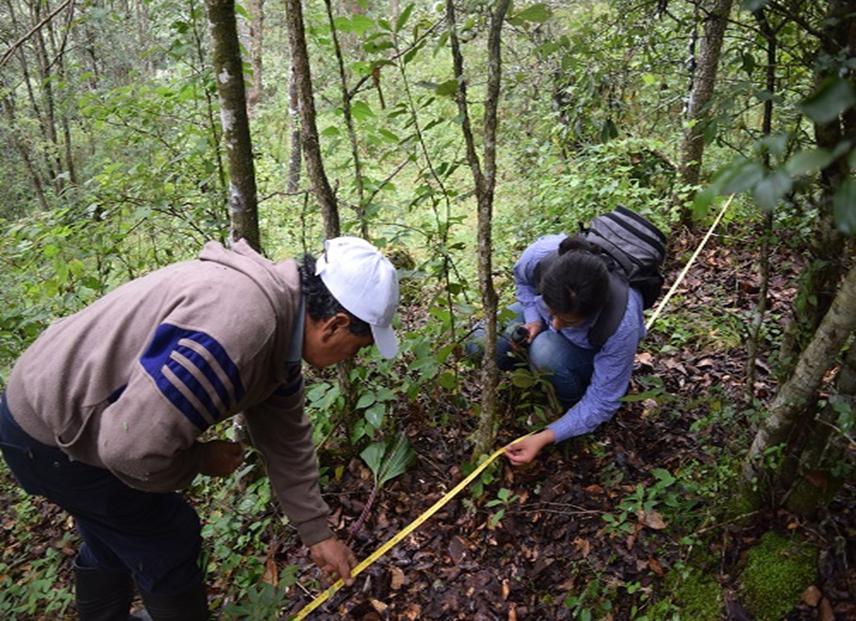Marcela Yilotl Cazares Sanchez
This project studies the vulnerability of the genus Quercus as the potential or the probability to receive damage due to the exposure of a disturbance or stressors over time and space at the Valle de Jovel basin-Chiapas, where exist a complicated situation with the oaks, because they are not allowed to reach the reproduction stage and have a short life before being used again, these characteristics classify the vegetation as a secondary, called "acahuales juveniles”, with a height of fewer than five metres, giving a simple structure without stratification or canopy recruitment.

This project studies the vulnerability of the genus Quercus as the potential or the probability to receive damage due to the exposure of a disturbance or stressors over time and space at the Valle de Jovel basin-Chiapas, where exist a complicated situation with the oaks, because they are not allowed to reach the reproduction stage and have a short life before being used again, these characteristics classify the vegetation as a secondary, called "acahuales juveniles”, with a height of fewer than five metres, giving a simple structure without stratification or canopy recruitment. This secondary vegetation has been present for more than three decades because of the substitution of mature forest to cultivation areas, carried out by different inhabitants: Mayan groups (Tzotziles and Tzeltales), locals, and foreigners that have underutilized the oak forests in terms of other resources that can provide (acorns, bark) and in some cases, are eliminated by being in areas of agricultural interest or near urban areas that tend to grow rapidly as the city of San Cristóbal de las Casas.
In this study, the approach of vegetation vulnerability to landscape transformation is different from previous studies that analyse this relation as a monotonic and linear process of cause-effect assuming a constant direction along the entire line, without any breaking point or oscillation. This monotonic process is generally obtained from ecological factors, which are not sufficient to explain the effects on distribution and diversity of vegetation within this region, therefore we omit the monotonic and integrate more than one factor of the landscape: geographical, social-cultural and ecological to have the state of oaks’ conservation, because we want to know: What landscape factors and interactions (ecological, social-cultural and physical spatial) make the oaks vulnerable? What ecological, social-cultural or physical spatial variables affect the presence, diversity, extension of the oaks? Is there any variable or interaction of variables (proxy) that increases the vulnerability of the oaks? Can a breakpoint be located, which represents the vulnerability point of the canopy cover through a period of ten years?
The methodology consists in the monitoring saplings of oaks in 14 plots across the gradient, transects for the diversity and occurrence of saplings in the forest, remote sensing, empirical information and Bayesian statistical analysis as classics to have outputs for the conservation of this genus in the country with the greatest diversity of oak species.